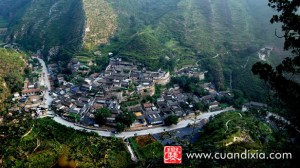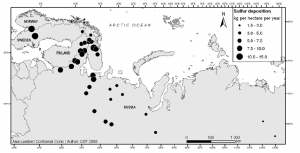
IIASA is located in the Laxenburg Castle, former summer retreat of the Habsburgs imperial family outside Vienna, Austria.
One of the largest challenges in search for solutions for problems concerning climate, environment, or poverty, is to generate a fruitful communication between scientists and policy makers. Currently, I work in the MAG group (Mitigation of Air Pollution & Greenhouse Gases) at IIASA (International Institute for Applied Systems Analysis), an institute specialising in this communication. How does this communication work? And why is IIASA heard (or is it)? In the following I list a few (possible) reasons for the important role IIASA has in the international policy arena. Note that these thoughts are mine, and they are based on my experiences only.
– History and tradition. IIASA was founded in the middle of the Cold War, in 1972, on the initiative of US president Lyndon Johnson and USSR premier Aleksei Kosygin (the era and the participants may explain the obscure name of the institute). The goal of IIASA was to promote co-operation between East and West in interdisciplinary scientific problems too wide for national institutions to handle. After the Cold War, the co-operation was extended from the East-West axis towards global, now crossing the boundaries between the first and third world. This background gives IIASA a strong label of neutrality. As a result of this history, IIASA scientists visit Brussels regularly to report our results to EU decision-makers. Similarly, representatives of the EU member countries regularly visit IIASA to update their information on, for example, the countries’ energy production and consumption, industry, transport, related technological objectives and future development.
– Continuous funding. More than half of IIASA funding comes from the NMOs (National Member Organizations, Finnish representative being the Academy of Finland), which typically receive most of their funding from the governments they represent. There are currently 20 NMOs, from all the continents, including the most important players (USA, Russia, China, India, Brazil, Germany, Japan, Australia). Of course, there are also NMOs that have stopped their contribution for supporting IIASA, but the typically five year long contracts are, I guess, relatively stable under the current economics.
– Policy-friendliness. IIASA transforms its scientific results into dollars/euros and human lives. The main output of the MAG program, the GAINS emission model, for example, gives out not only the efficiency of the technologies for decreasing emissions, but also their price. Furthermore, it estimates how many human lives can be saved by paying that price. And even further, it can be set to optimize the abatements of different emissions (different in sources and pollutants) in order to achieve the maximal benefit for a certain cost. And the data is available to anyone, registration as a user is free of charge. Another example would be the ‘7 shocks and Finland’ –project, ended a year ago, which analysed how the Finnish national economy would survive the economic shock situations.
Can we learn something from IIASA to help our own research in Finland to have an influence on political decisions? Organisations with similar goals in Finland include SYKE (Finnish Environmental Institute), the new national Climate Panel (Ilmastopaneeli), and the Forum for Environmental Information (Ympäristötiedon foorumi), although the two latter do not conduct research of their own. Similarly to IIASA, these organisations have been at least partly founded by decision makers in order to aggregate information necessary for their decisions.
These organisations are necessary because the purely academic results that universities provide are often too exact or theoretical for basing political decisions on. Thus, in order to have political influence, I find researchers and other well informed agents should, firstly, support (by actively offering information and, possibly, some resources) institutions such as IIASA, SYKE, the Climate Panel and the Forum for Environmental Information which are currently responsible for refining the scientific results to a form applicable to policy. Secondly, already at university level, we should put effort in offering simplified enough versions of our results to the media and thus to have also the non-academic people to hear and understand them: if the journalists do not understand the press-releases, the results never reach the news.
Most importantly, both above points must be carried out continuously, even if results are not immediately observable: at that very moment when the majority of decision makers feel that change is necessary (and voters are ready for it), we should be able to offer updated and comprehensive knowledge on feasible options, on their effectiveness and price. I guess very few of the reports by IIASA lead to immediate decisions, but when some decisions suddenly are to be made, it is too late to start scanning through ACP, JGR or BER and discussing what could be suggested for an action.
Pauli Paasonen (Division of Atmospheric Sciences; Guest Research Scholar at IIASA)
IIASA: http://www.iiasa.ac.at/
MAG ja GAINS: http://www.iiasa.ac.at/web/home/research/researchPrograms/Program-Overview.en.html
 During the first week of June, the 9th International Carbon Dioxide Conference held in Beijing gathered together the carbon community from different parts of the world. Conference presentations ranged from climate policy to in-situ and remote observations of CO2 and modelling of CO2 emissions and sinks. As one might expect, many of the presentations considered anthropogenic CO2 emissions. Alarming news was that during recent years, global CO2 emissions have followed the worst scenarios predicted by different sources; the hope that the emissions would follow lower estimates is declining. Besides the growth in emissions, one of the biggest questions among the community seemed to be the strength of carbon sinks on land surface and in the ocean. Currently, oceans are considered to store about 1/3 of anthropogenic CO2 emissions but this number includes large uncertainties. Furthermore, several presentations referred to modelling studies suggesting that the carbon sink to oceans is actually smaller than previously expected, and that the sink may saturate more rapidly.
During the first week of June, the 9th International Carbon Dioxide Conference held in Beijing gathered together the carbon community from different parts of the world. Conference presentations ranged from climate policy to in-situ and remote observations of CO2 and modelling of CO2 emissions and sinks. As one might expect, many of the presentations considered anthropogenic CO2 emissions. Alarming news was that during recent years, global CO2 emissions have followed the worst scenarios predicted by different sources; the hope that the emissions would follow lower estimates is declining. Besides the growth in emissions, one of the biggest questions among the community seemed to be the strength of carbon sinks on land surface and in the ocean. Currently, oceans are considered to store about 1/3 of anthropogenic CO2 emissions but this number includes large uncertainties. Furthermore, several presentations referred to modelling studies suggesting that the carbon sink to oceans is actually smaller than previously expected, and that the sink may saturate more rapidly.



